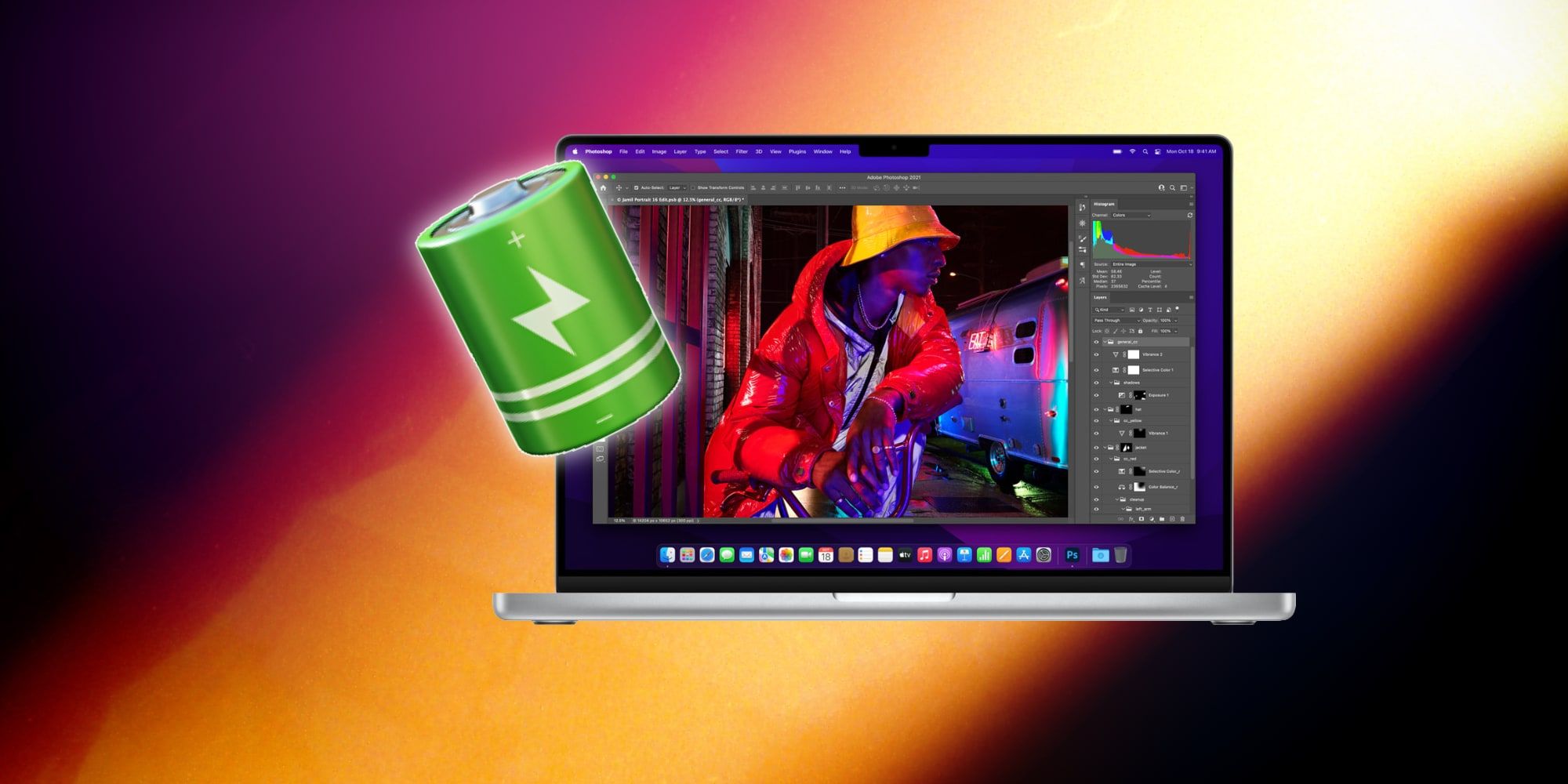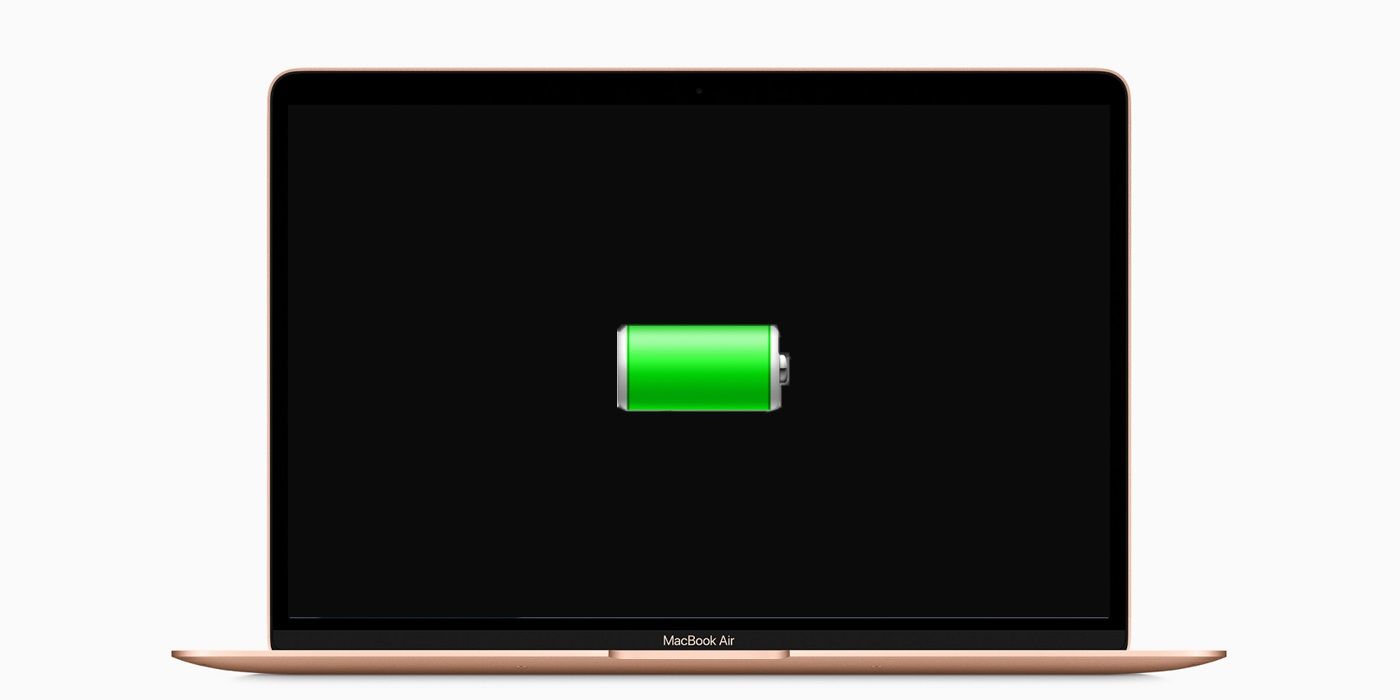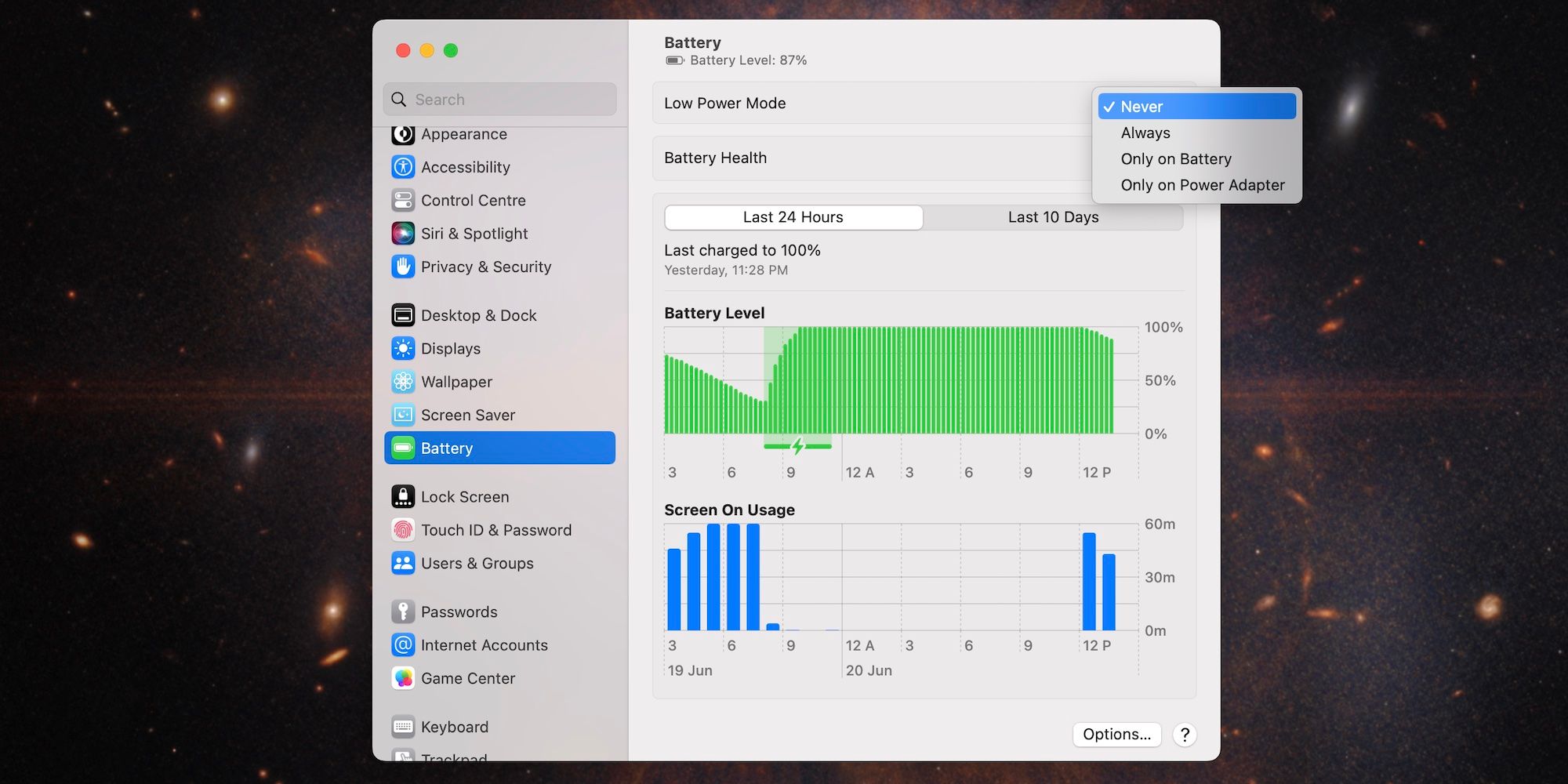MacBook laptops have a built-in Low Power Mode, but Apple's website only includes a single sentence about this potentially critical feature. The newest MacBook Air and MacBook Pro models are excellent at extending battery life through the use of high-performance yet extremely efficient M-series processors. However, every laptop reaches a point when the power starts to run low. At that moment, it's important to give the user more time to wrap up a project or reach a save spot in a game before the MacBook shuts down.
Low Power Mode is available on several of Apple's MacBook laptops that were manufactured in 2016 or later and provides a way to extend battery life when it starts to run low. Apple describes it very briefly, stating, Low Power Mode "reduces energy usage to increase battery life." However, a chat with an Apple Support representative was able to add a bit more detail to that short summary and anyone concerned about a big drop in performance or heavy restrictions on use can relax. It is a gentle reduction in performance, mostly affecting background processing, and shouldn't affect the normal operation of the laptop or connectivity other than potentially slight slowdowns.
What MacBook's Low Power Mode Does
According to Apple Support, enabling Low Power Mode could result in screen brightness dropping. Using the screen is one of the biggest power draws with modern technology and this is a quick and easy way to extend battery life. In Low Power Mode, macOS also tells all apps that are running to reduce energy usage to something less than maximum capacity, which might disable some background processes but shouldn't affect overall behavior.
As with the iPhone, background internet processes and preloading will likely be paused as well. Foreground tasks, such as the current page or current app in the foreground shouldn't suffer, and in testing, internet download speed was unchanged. While Low Power Mode shouldn't affect Apple Continuity features overall, transfer speed could be lower. For example, 'Unlock with Apple Watch' should work as expected, but Apple Support indicated that AirDrop transfers could be slightly slower.
How To Enable Low Power Mode On A MacBook
To enable Low Power Mode on a MacBook, click on the Apple icon in the top left corner of the menu bar. Select 'System Settings' and click on 'Battery' in the sidebar. Low Power Mode will be displayed right on top. A drop-down menu provides four options: 'Never,' 'Always,' 'Only On Battery,' and 'Only On Power Adapter.'
By default, Low Power Mode is set to 'Never.' If selecting 'Always' or 'Only On Battery,' a message saying 'Your Mac will reduce energy to increase battery life' will appear. If choosing 'Only On Power Adapter,' the message says 'Your Mac will manage performance to reduce energy usage.' Either way, users are looking at some sort of reduction in system performance when Low Power Mode is enabled. Unfortunately, the Mac doesn't notify users to turn on Low Power Mode when the battery dips below a specific percentage, like on the iPhone. As a result, MacBook users will need to manually turn on this option when they want to extend battery life.
Source: Apple



